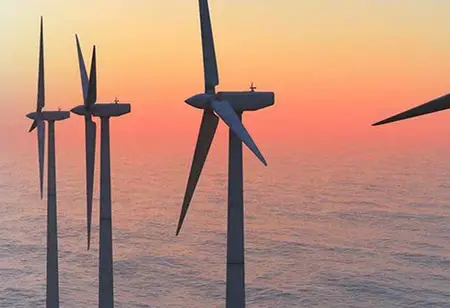Thank you for Subscribing to Energy Business Review Weekly Brief
How Is Biomass Energy Beneficial?
Material derived from plant and animal materials is known as biomass.

By
Energy Business Review | Tuesday, August 02, 2022
Stay ahead of the industry with exclusive feature stories on the top companies, expert insights and the latest news delivered straight to your inbox. Subscribe today.
Biomass energy usage might get directed toward organic waste that would otherwise get disposed of in landfills.
Fremont, CA: Material derived from plant and animal materials is known as biomass. Utilizing biomass, biomass energy burns organic materials to provide energy. Burning these materials releases heat energy that may be helpful to warm buildings or water. Steam is created when water is heated; this steam may then produce energy. Compared to fossil fuels, employing organic materials to generate heat and power is more environmentally friendly. The advantages of biomass energy are as follows:
- Indefinitely Renewable
The bulk of the energy used worldwide gets produced by burning fossil fuels. A limited resource, fossil fuels are. To supply the world's energy needs, other fuel sources will be necessary once fossil fuel supplies are exhausted. The use of biomass can help to fill this demand. Sludge from wastewater treatment, animal manure, and organic waste from logging and agriculture operations are all suitable fuels for producing biomass energy. These resources will be easily accessible for as long as people live on earth.
- Reduce, Reuse, Recycle
Biomass energy usage might get directed toward organic waste that would otherwise get disposed of in landfills. There is less waste in landfills, and the filling rate gets slowed. Wood chips and agricultural waste products are some of the most typical wastes utilized for biomass energy. Wooden furniture and log homes are two examples of old wood constructions that may readily get turned into new wood products. Ideally, these would also come from ethical logging and harvesting processes.
Carbon is naturally released into the environment through decomposing the materials used to produce biomass energy. Living plants and trees use carbon dioxide to thrive and release oxygen into the atmosphere. Existing plants and trees absorb the carbon dioxide that is produced by burning organic material. The biomass cycle has no new carbon; hence it is carbon-neutral.
- Smaller Carbon Footprint
As agriculture becomes more effective, there is an increase in the number of unproductive acreages. Open space maintenance is expensive. Farmers are thus selling up their land to make way for new construction. Organic material for biofuels might be grown on unused, open farmland.
The amount of stormwater runoff rises when undeveloped regions are built on open stretches of land. As a result, more contaminants in stormwater runoff from urbanized areas than undeveloped ones are present. Water pollution might decrease by growing biomass sources in open spaces rather than building new projects.
- Social Benefits of Biomass Energy
Sulfur dioxide, mercury, and fine particles are released into the atmosphere when fossil fuels are burned, and these pollutants have got linked to asthma, cancer, and respiratory issues. Compared to fossil fuels, biomass energy generates less hazardous byproducts, resulting in cleaner air and happier, healthier people.






